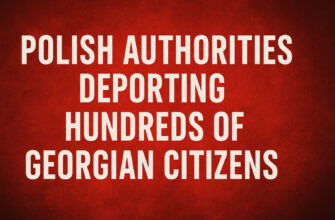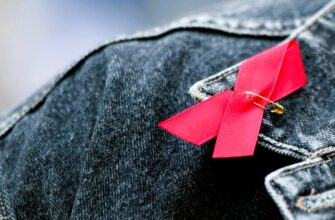Europe is baking right now. As July begins, record-breaking temperatures exceeding 40 °C (104 °F) are sweeping across southern and central parts of the continent. From Spain and Portugal to France and Italy, the heat is intensifying, and communities are confronting new challenges each day. Field workers see shifts in labor laws. Schools close. Historic landmarks shut temporarily. The situation raises health concerns and practical questions for travelers and residents alike.
Why Is Europe So Hot Right Now?
A massive heat dome, fueled by hot air from North Africa, has parked over Europe. It’s the first major heatwave of the summer, and it’s early—setting records normally expected in July or August washingtonpost.com.
June in many regions has already matched or surpassed average July and August temperatures. In Spain, June averaged 23.6 °C, more than the normal July average of 23.1 °C thesun.ie.
This trend confirms climate scientists’ warnings: Europe is warming at nearly twice the global average en.wikipedia.org+6reuters.com+6apnews.com+6.
How Hot Are We Talking?
- Portugal: Hit a record high of 46.6 °C on June 29, the hottest June ever recorded reddit.com+5omni.se+5abcnews.go.com+5.
- Spain: Cities like Huelva reached 46 °C; Barcelona recorded its hottest June since 1914, averaging 26 °C and peaking at 37.9 °C apnews.com+15abcnews.go.com+15apnews.com+15.
- France: Many regions hit 40–41 °C. Authorities closed over 1 300 schools and shut the upper level of the Eiffel Tower in Paris .
- Italy: 17 cities under red alerts, with work bans on outdoor construction during peak sun en.wikipedia.org+5thetimes.co.uk+5apnews.com+5.
- Greece, Croatia, Turkey: Heatwaves coincided with wildfires that forced evacuations, especially in Turkey’s Izmir en.wikipedia.org+1apnews.com+1.
Even Northern Europe isn’t spared: Berlin Zoo staff now hose down animals; London broke temperature records in early June leading to estimated hundreds of heat-related deaths en.wikipedia.org.

What This Means for You
Health and Safety
- Stay inside during midday heat, usually from noon to 5 pm. That’s when UV radiation and mercury spikes are most dangerous .
- Hydrate constantly. Signs of heat exhaustion—dizziness, headache, nausea—should not be ignored.
- Protect vulnerable people. Elderly, children, and those with chronic illnesses must avoid direct sun.
Public Response
- School closures: In France, over 1 300 schools are shut; Italian regions banned outdoor work en.wikipedia.org+5aljazeera.com+5theguardian.com+5.
- Landmark shutdowns: The Eiffel Tower red-flagged its top floor abcnews.go.com+3thetimes.co.uk+3reuters.com+3; Athens and Rome intermittent closures.
- Transport delays: Trains between France and Italy halted over mudslides; traffic curbs near Paris aim to reduce pollution theguardian.com+1en.wikipedia.org+1thetimes.co.uk+1theguardian.com+1.
- Marine heat wave: Mediterranean waters reached record June temperatures (~26 °C), harming marine ecosystems abcnews.go.com+2thetimes.co.uk+2washingtonpost.com+2.
Fire Risk
Wildfires rage in Turkey, Greece, Spain and Portugal. With drought and blazing heat, fire risks are critical en.wikipedia.org+1en.wikipedia.org+1.
Smart Tips to Stay Cool
At Home or in a Hotel
- Close shutters and curtains during day. Keep indoor spaces cooler by blocking sunlight.
- Use fans wisely. Set at night to spread cool air in open windows.
- Stay hydrated. Drink water throughout the day, even if you don’t feel thirsty.
- Shower or wet your shirt. It helps your body stay at a safe temperature.
If You Must Be Outside
- Plan outdoor activities early or late. Morning and evening hours are less extreme.
- Wear loose, light-colored clothing and a wide-brimmed hat. It helps reflect sun and relax your body’s cooling system.
- Use sunscreen SPF 30+. Reapply every two hours—or after swimming.
- Take breaks. Step into air-conditioned spaces, shade, or even shop malls to rest and recover.
Traveling or Visiting
- Check local alerts. Many countries issue color-coded heat alerts—red is highest risk.
- Rethink plans like visiting outdoor landmarks. The peak of the Eiffel Tower, for example, is off-limits for now.
- Stay informed. Public bulletins often advise avoiding driving or outdoor work during peak hours.
Why It Matters Beyond the Heat
Today’s heatwave isn’t just about discomfort—it’s a safety hazard, an economic burden, and an environmental warning.
- Mortality spike: Heatwaves kill more people annually than floods or storms in Europe theguardian.com.
- Infrastructure strain: Overloaded power grids, slowed trains, and shuttered landmarks hurt local businesses.
- Long-term trend: Climate experts warn summers will get hotter and more frequent by 2100—temperatures of 40 °C or more will be routine thetimes.co.uk+1theguardian.com+1reuters.com+12apnews.com+12abcnews.go.com+12
That makes both immediate actions and long-term climate policies essential. Meanwhile, travelers and locals must adapt quickly
FAQ
Q1: Can I still travel to Europe right now?
Yes—but check destination weather alerts. Avoid peak sun hours, stay hydrated, and favor indoor attractions.
Q2: Are public pools or beaches safe?
Yes. They provide relief—but be mindful of sea temperatures; Mediterranean waters are unusually warm.
Q3: How long will the heat last?
Forecasts suggest relief mid-week, but heat may return. Stay tuned to local weather alerts.
Q4: Any specific tips for kids and seniors?
Keep them indoors during midday, offer extra fluids, and dress them in light clothing.
Final Thoughts
Europe is facing a serious heatwave—temperatures above 40 °C are challenging daily life, travel, and public services. But with careful planning and smart precautions, you can stay safe and still enjoy your summer. Keep an eye on weather alerts, rethink your schedule, and prioritize hydration and cool environments.
This article was prepared by journalists at TheMors, offering timely and practical coverage of current events. Be sure to visit TheMors – Breaking News for the latest updates on weather, travel, and everything you need to stay informed this summer.









